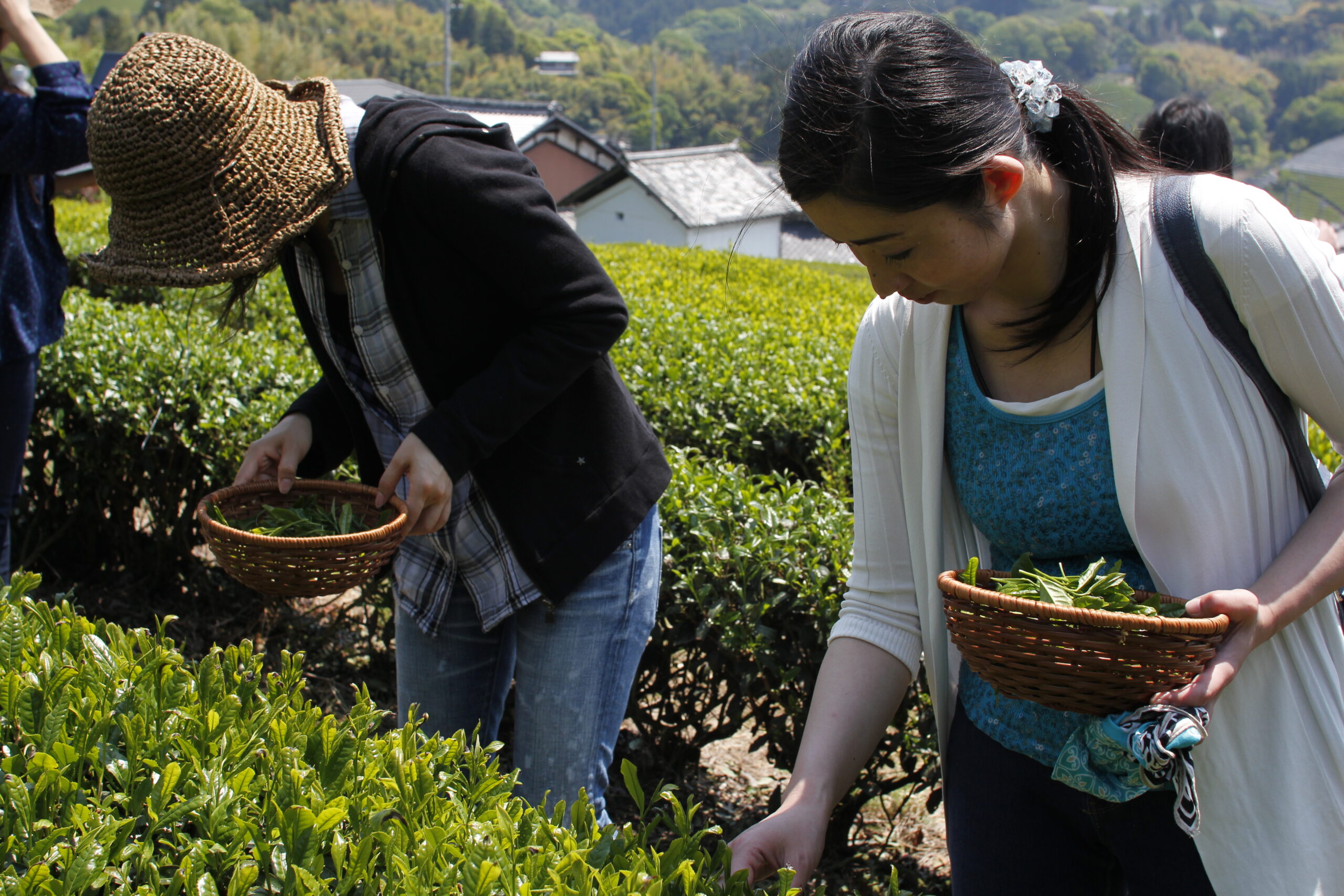We are now at the most exciting time of the year for Japanese tea: spring harvest, the most prized one, is happening all over the country. How is the tea that ends up in our cups being harvested?
Traditionally, tea leaves were harvested by hand. For sencha, a bud and two leaves are selected and for spring teas the leaves are so tender and soft that can easily be picked using only our fingers.

Nowadays, handpicking is done only for very special teas: produced by traditional tea farms, for competitions or events. The vast majority of Japanese tea production is machine-harvested.

A professional tea picker could harvest up to 30 kilos of tea leaves per day, depending on the technique used. Currently, there are very few left, and very often for competition handpicked tea, volunteers are recruited.

With technological and economical development, Japan started to look for ways to increase the tea production. One of the first inventions was during the Showa era: the tea shears with a bag attached to it – this already improved the harvest capacity for one person up to 100 kilos per day. While the shears are still used in some countries, you cannot see them anymore in Japan. After the sheers, a battery cutter was invented and used for some time.

But the real change appeared in 1965, when a hand-held portable harvesting machine was patented in Shizuoka. With this machine, the leaves are cut by blades while being air-blown into the huge bag attached to the machine. The harvest result with this device can be several hundred kilos per day. This kind of machine is still common today in steep and hilly areas, where tea bushes grow on slopes.

The driven machines were the next development and they started to be used in the 1970s in Kagoshima prefecture. Even nowadays, most of Kagoshima tea is harvested in this way. These machines can harvest over a ton of tea per day and need only one person to drive it – and more modern ones not even, as they can go on rails in between the rows of tea bushes. But the downside is that they cannot go on steep slopes. Therefore, they are mainly used on flatlands.

Whichever way your tea was taken of the plant, we hope you enjoy today’s cup and appreciate the hard work that goes into harvesting!


